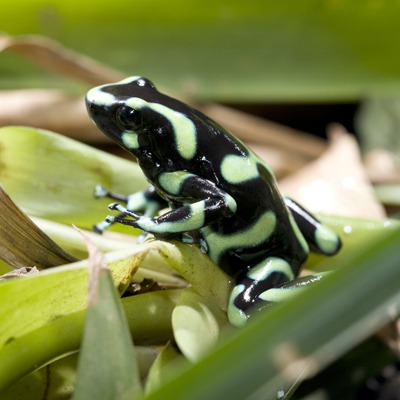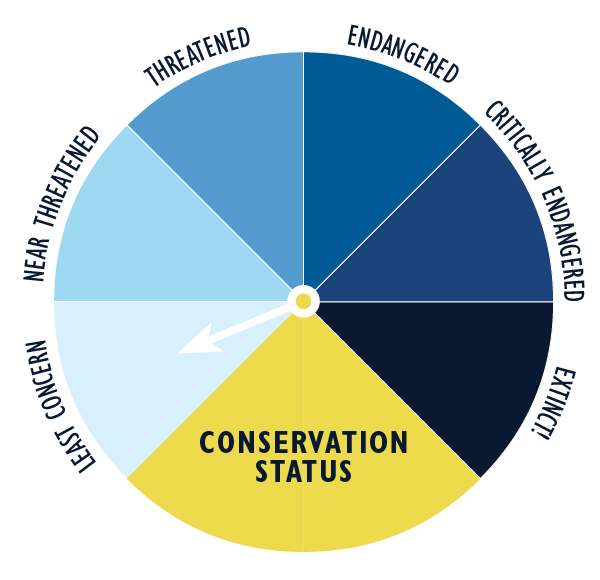
About Green and Black Poison Dart Frog
This species of poison dart frog comes in many different colors. The most common color pattern features black with either green or light blue bands. Similar to most frogs, the head is fused to the trunk of the body with no tail. The “Poison” in their name references the poison glands located throughout the surface of their body. These glands are not only harmful to potential predators, but to humans as well, as unprotected contact can be highly dangerous. Most predators stay away, however, as the frog’s bright green skin gives them all the warning they need.
Habitat
The green and black poison dart frog can be found in Central and South America, in countries like Nicaragua, Costa Rica, Brazil, and Bolivia. They are found on the rainforest floor, usually near small streams or bodies of water.
Diet
This species feeds mainly on small invertebrates like ants and other smaller insects. Ants have high levels of alkaloids in their tissues which helps make the frog’s skin poisonous and dangerous to touch. Poison dart frogs also have excellent vision which helps them capture even the tiniest of insects.
Family Life
Like many other frog species, the green and black poison dart frog is diurnal and very protective of its young. Mating occurs once the male frog establishes a territory by fighting off other lurking competitors. Once the mate has been chosen by the female, the male will guard the territory, along with the eggs the female has laid.
Conservation Status
The conservation status of the Green and Black Poison Dart Frog is classified as least concern.
Threats
- Currently, the green and black poison dart frog is not under any immediate threat; however, habitat destruction poses a major threat to this population of frog species. Research has shown that the green and black poison dart frog will be the first poison dart frog to be listed as endangered.
- The reason for their steady population numbers is a result of their adaptability to their surroundings. Their skin prevents them from being targeted by predators; however, they have been known to lose their toxicity in captivity.
Facts about Green and Black Poison Dart Frog
Class:
Amphibia (amphibian)Order:
Anura (frog)Family:
Dendrobatidae (poison dart frogs)Genus:
Dendrobates (poison dart frogs)Species:
Dendrobates auratus (green and black poison dart frog)Life Span:
~8 yearsSize:
1.5 inches (4 cm)Weight:
.3 – .5 ounces (7 – 14 grams)
Fun Facts
- Humans native to the rainforest region have used the toxicity of the poison dart frog in weapons.
- Male frogs will often fight one another for territory, with the winning frog pinning the other to the ground.
- Although the window of opportunity to benefit from these frogs is dwindling, scientists have been studying how the toxicity of the frog’s skin can be used for medical purposes.